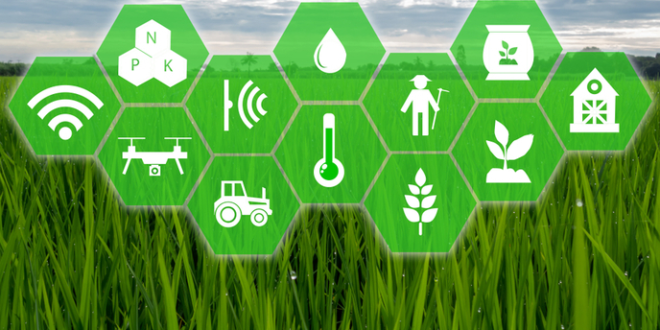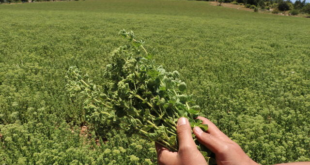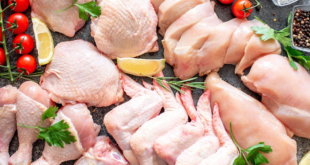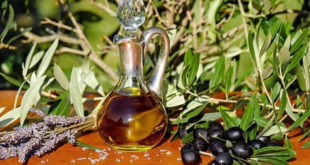Transforma Insights’ recent report, ‘Digital Transformation (DX) in the Agriculture sector’ identified nine key domains of change in the Agriculture sector that are enabled by disruptive technologies such as Artificial Intelligence and the Internet of Things. In this article we examine each of these key use cases and the impact that they can have in real-world deployments.

Crop Management
Crop Management refers to the monitoring of crop conditions via in-field sensors to monitor soil, crops, and plants by collecting data such as temperature, moisture, salinity and fertility. They can also detect weed growth, water levels and pest/animal invasion. Data collected can be used to recommend doses of fertiliser, targeted irrigation and early identification of diseases or substandard conditions. There are 3 major types of sensors used now: soil-based, plant-based, and weather-based sensors. Many vendors are now developing a single product combining weather, plant, and soil sensors for better estimation, such as Mark 3 by Arable, which also integrates a camera to provide crop images for remote observation.
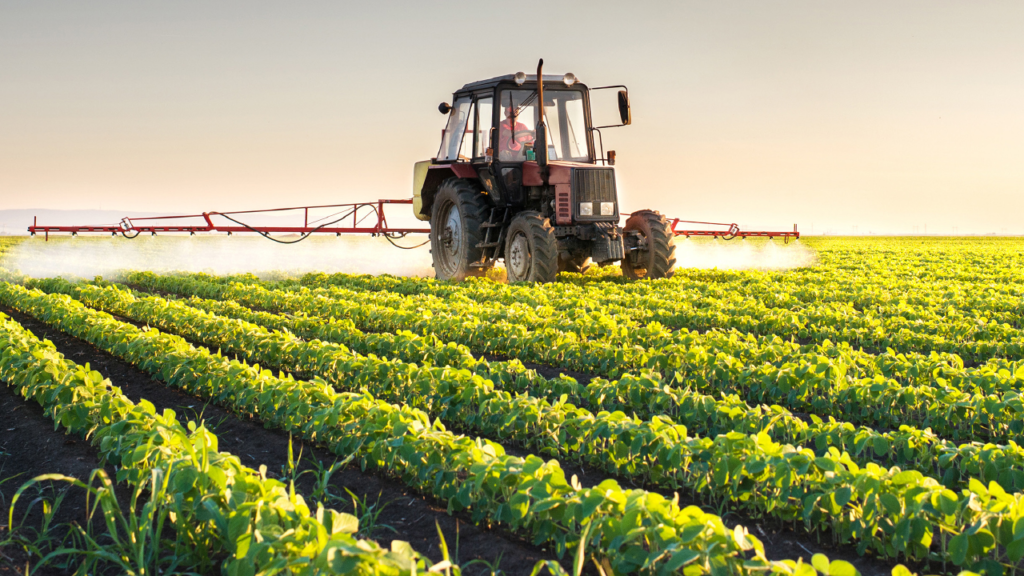
By 2050, the agriculture industry will have to increase food production by 70% (compared to 2009) to feed the global population. The use of crop monitoring and management can significantly reduce power and water consumption and lead to increased yields. The EU’s LIFE GAIA Sense project, a smart farming techniques project focusing on smart agriculture practices such as automated irrigation and crop monitoring, estimates energy reduction of (up to 25%), improved nitrogen use (up to 30%), reduced pesticide usage (11-25%) and less water consumption (25%).
Some example deployments include Pago Aylés winery in Spain which deployed 100 Libelium devices within its vineyard and expects a 25% increase in wine quality, a 30% reduction in information management costs, and a 10–50% reduction in production costs, and Soilsens’ pilots which showed that using its platform can increase potato yield by 20% while reducing water and electricity consumption by 20%.

Automatic Irrigation
Automatic Irrigation refers to the process of automating irrigation activities (depending on field and weather conditions) by placing devices and sensors in the fields. These systems also monitor the water flow in valves and detect possible leakages due to burst pipes and other hardware failures quickly to minimise losses. The main components of a smart irrigation system are sensors, analytics software, and irrigation control automation.
Around 50% of water is wasted due to evaporation and runoff caused by inefficient irrigation techniques. AI-based and IoT-controlled irrigation systems have the potential to save this water wastage by 20-40%. In pilot tests run by the International Center for Water Technology, smart irrigation controllers saved 20% more water than traditional irrigation controllers. While Grundfos estimates that if water pumps are IoT connected, the total percentage of consumed electricity for agricultural activities will reduce from 10% to less than 6%.

Apart from optimising the use of water, automated irrigation systems increase crop yields by 20-40%. They also reduce the chances of waterborne diseases, which can damage up to 60-70% of the total crop produced. Telefonica and ABB implemented automated irrigation systems at 12 farms in Spain, which reduced water wastage, brought down electricity costs by 30%, and increased farm profits by 25%.
Livestock Management
Livestock Management refers to the management of livestock by automated real-time monitoring of health and welfare, location, production/reproduction status and environmental impacts.
About 50-60% of operating costs in dairy farming are due to animal feeding and related labour activities, and livestock management solutions reduce those operational expenses. The major use cases of livestock management technologies include healthcare management, feed management, breeding management/heat detection, weight management, location tracking, milk harvesting management, calving management, and virtual fencing.

Wisconsin dairy farm Dairy Dreams uses Alta Cow WATCH smart tags on its 3,000 cows, to continuously monitor their eating, rumination, and inactive behaviour. Using the monitoring solutions, the firm increased its pregnancy rate from 60% to 70%, increased the service rate by 8-10%, and achieved a 100% palpated pregnancy rate among heifers. After adopting cow monitoring software, smaXtec, German farmers experienced 80% less severe disease progression and zero animal losses due to diseases. They also increased milk production by 500kg within a few months.
Indoor Vertical Farming and Smart Greenhouses
Indoor Vertical Farming and Smart Greenhouses focus on the use of digital technologies to provide controlled environments, customised according to the needs of vegetation inside the greenhouse or indoor vertical farm. Most indoor farms now use artificial lighting, aeroponic, and hydroponic technologies to grow plants.

Indoor vertical farms provide higher yield per acre of land, use less water, provide higher food security and consistent produce throughout the year. These farms use 70-95% less water, 90% less land than traditional agriculture and can produce 20-40 times more food in the same space.
By deploying Aranet’s IoT solution, Getlini EKO greenhouse was able to identify the ideal time for lighting, irrigation, and fertilisation, increasing their yield by 18% during the first two years. In India, UrbanKisaan used hydroponics to grow saffron in Telangana (an area typically unsuited for saffron farming) resulting in saffron production in one-fortieth of the area and twenty-fold increased efficiency. A smart indoor vertical farm in Fujian Province, covering 5,000 sq. meters, can produce 8-10 tonnes of vegetables per day while employing only 4 people to manage it, while a traditional farm requires around 300 farmers to produce the same amount of output.
Drone Farming
Drone Farming refers to the use of airborne drones to enhance various agricultural practices including crop health assessment, irrigation, crop monitoring, crop spraying, planting, and soil and field analysis. The benefits of drone farming include less labour effort, higher productivity and more efficient use of resources including water, chemicals, fertilizers and land. Some of the most significant applications of drones in agriculture are crop spraying, crop monitoring, soil and field analysis, seeding/planting, irrigation, and livestock monitoring.
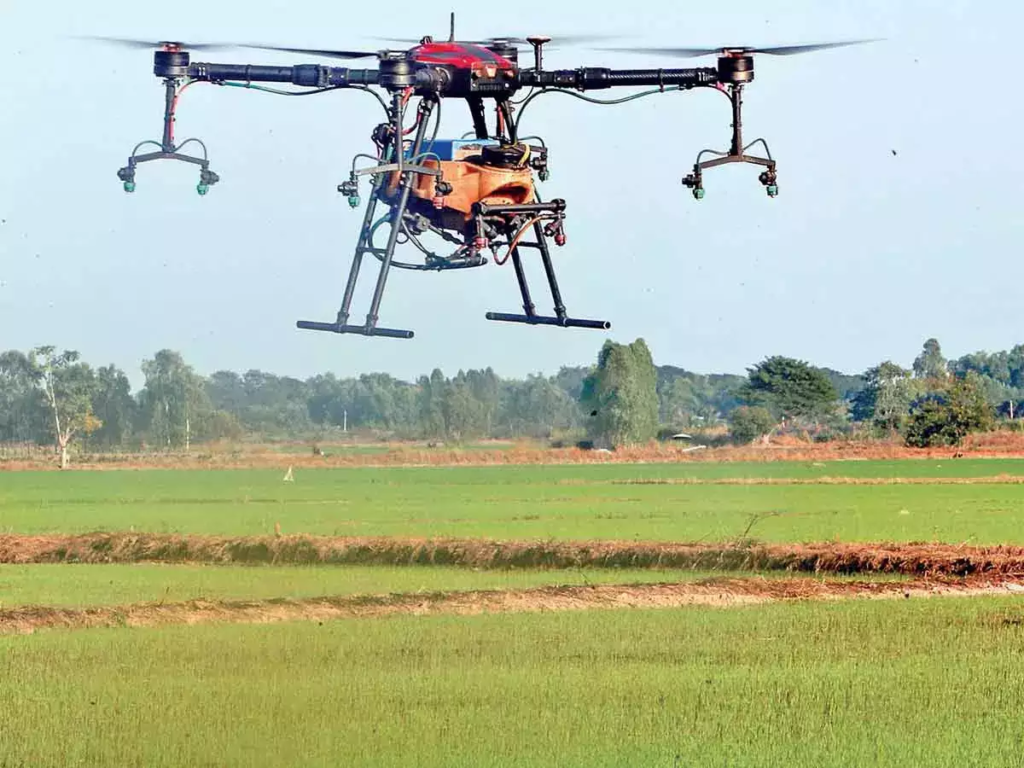
In South Korea, 30% of all agriculture spraying is done by drones, and in Japan, 40% of spraying in rice crops is done using drones. Transforma Insights estimates that drones use 30-40% less chemicals or fertilizers in the spraying process and are 40-60% faster than manual spraying. Furthermore, according to Bayer, drone water spraying uses 8-9 litres of water to irrigate one acre of land, while conventional spray pumps consume 150-200 litres. Drones can also reduce planting cost by up to 85% and help achieve rates of uptake of nutrients of 75% in addition to reducing the strenuous work of ground planting.
By optimising seed placement and mapping, drones can increase yield, and the American Farm Bureau Federation estimates that farmers in the US can save around USD1.3 billion every year by using drones in their operations. It is also estimated that in India drone-led farming can reduce input costs by 18-20% while enhancing yield by 30-100%.
Farm Automation and Robots
Farm Automation and Robots includes a range of technologies used to automate repetitive labour-intensive tasks performed by farmers in the field. This solution area particularly focuses on smart agriculture vehicles and autonomous/semi-autonomous robots replacing manual labour work such as harvesting, seeding, and weeding. By using farm automation and robots, farmers can reduce operational costs and increase yields while promoting sustainable farming practices.
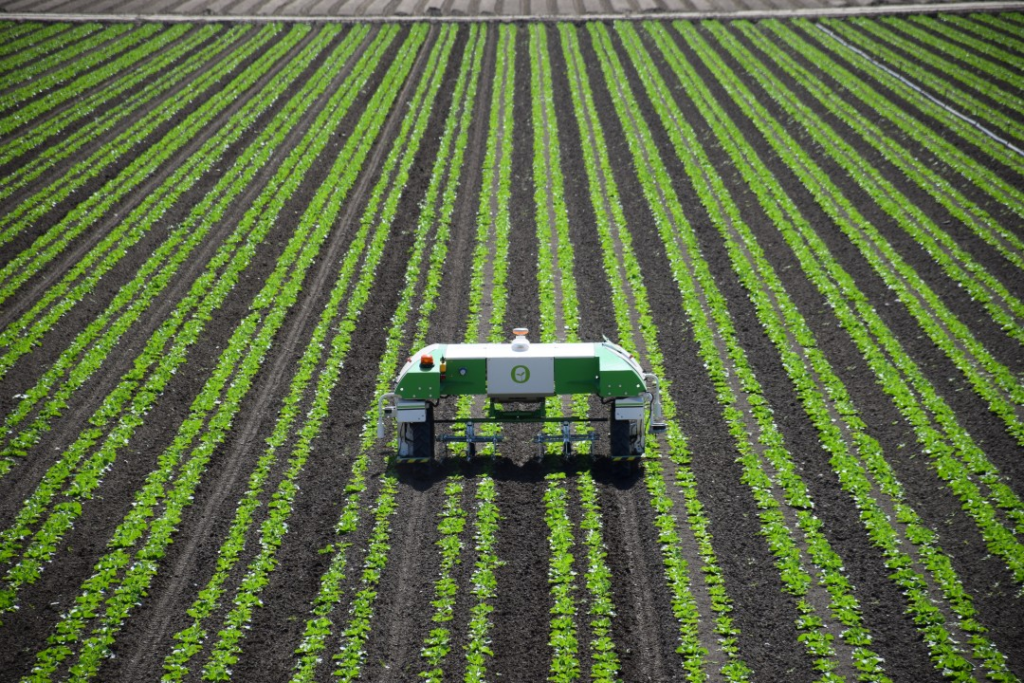
According to the International Journal of Weed Biology, weeds cause 32% loss in crops which is significantly higher than pests (18%) and pathogens (15%)[], and hence, it is an important area for farmers to address. Weeding constitutes about 16% of the total cost of cultivation and weed control robots can reduce annual weed control costs by 50-80%, bringing down the total cost of cultivation by 8-13%. Weed control robots are much more efficient than human labour, and a weeder from Carbon Robotics can kill 100,000 weeds per hour and clear up to 15-20 acres of farms in a day whereas a human worker can weed an average of 1 acre a day.
In terms of harvesting, Robotic harvesters are 10 times faster than human labour, and Abundant Robots (non-operating now) achieved an average picking time of two seconds per apple. On average, harvesting constitutes 44% of labour costs, and these robots can bring down the harvesting cost by 20-25%, reducing total production costs by 12%-18%. For example, the FFRobot harvester can yield 9,000 fruits per hour, which is 10 times more than the yield of manual labour[].
Farm Management
Farm Management refers to digital technologies used to help optimise and manage operations and production routines at farms. These solutions enable farmers in automating farm activities such as data storage, monitoring, record management, analysing the quality of farming produce, and optimising routine work and schedules. These solutions help businesses mitigate risks and forecast crop yield and health, water stress, pests and diseases, and identify a range of early warning signals to enable efficient business management.
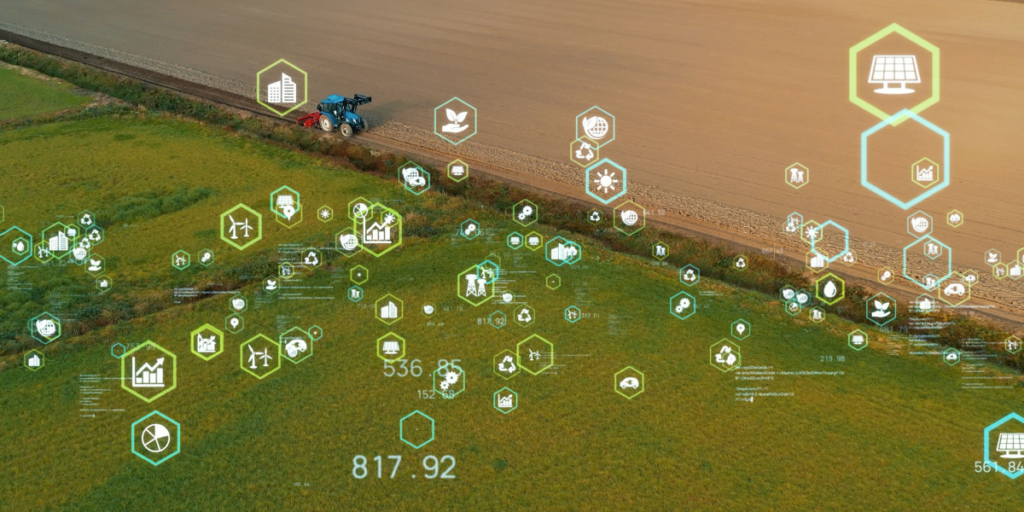
One example of a farm management system is Microsoft’s ‘Microsoft Azure Data Manager for Agriculture’, which connects data from disparate sources and processes it through pre-built modules and services developed specifically for agriculture applications and data. Bayer is leveraging Microsoft’s platform to release Bayer AgPowered Services to provide insights on crop health, growth trends, potential yield, heat stress impact, weather forecasts and more.
PepsiCo India plans for a crop & plot-level predictive intelligence platform, which will use Cropin’s industry cloud. The platform will correlate satellite imagery data and remote sensing data, and forecasts data 10 days in advance which assists farmers in crop monitoring. Currently in the trial phase, the platform covers 62 farms.
Produce Monitoring
Produce Monitoring solutions include technologies used in post-harvesting operations, especially in quality control and sorting and storage. These solutions also monitor silos to transmit information about the stocks’ quantities, temperatures, and moisture contents.

Around 50% of cereal grains, vegetables and fruits can be spoiled during the storage and transportation stage due to the lack of technical inefficiency such as non-maintenance of appropriate moisture levels. Incorrect moisture levels can lead to insect infestation and fermentation, and reducing this loss should be a priority. For example, in India, only 10% of AgriTech startups are focused on post-harvest operations and the remaining 90% cater to pre-harvest operations.
AI can enhance grain handling and storage processes, and an Indian post-harvest storage company, Sohan Lal Commodity Management (SLCM), has developed an AI engine to predict storage conditions and suggest preventive actions to reduce spoilage, which has reduced storage losses in the warehouse from 10% to 0.5%.
Supply Monitoring
Supply Monitoring refers to the monitoring of input resources for agricultural operations such as fertilizers, fuel/diesel, water tanks, dams, reservoirs, and other water storage facilities on farms to have real-time visibility into input levels. It also includes monitoring of cow troughs and livestock feed in dairy farms. These solutions also prevent fuel theft, which is one of the major issues faced by small and mid-sized farmers. In the case of Livestock, similar solutions are used to monitor feed levels eliminating cases of feed outages and overfills.

A New Zealand farmer attached Levno’s battery-powered sensors to fuel tanks, supported over Spark’s LoRaWAN network. The solution helped the farmer stop fuel theft by, for instance, receiving alerts if fuel was removed from storage at night. These solutions also reduce spillage from liquid fertilizer tanks, which can otherwise result in hefty penalties. For instance, in 2020, Gavilon had to pay USD270,000 in fines and restoration fees for a fertilizer spill.
The nine key digital solutions listed above present a tremendous opportunity for the agriculture sector to increase efficiency, reduce loss and improve yields, all while reducing the environmental impact of operations. To feed more than 10 billion people by 2050, the agriculture industry needs to increase its production capacity by 70% (compared to 2009). These technologies will be critical in making that happen.
By Suruchi Dhingra, Research Manager, and Joydeep Bhattacharyya, Content Editor, Transforma Insights…
Source: www.agropages.com
 THE GLOBAL WINDOW OF TURKISH FOOD AND AGRICULTURE The Global Window of Turkish Food and Agriculture Sector
THE GLOBAL WINDOW OF TURKISH FOOD AND AGRICULTURE The Global Window of Turkish Food and Agriculture Sector


